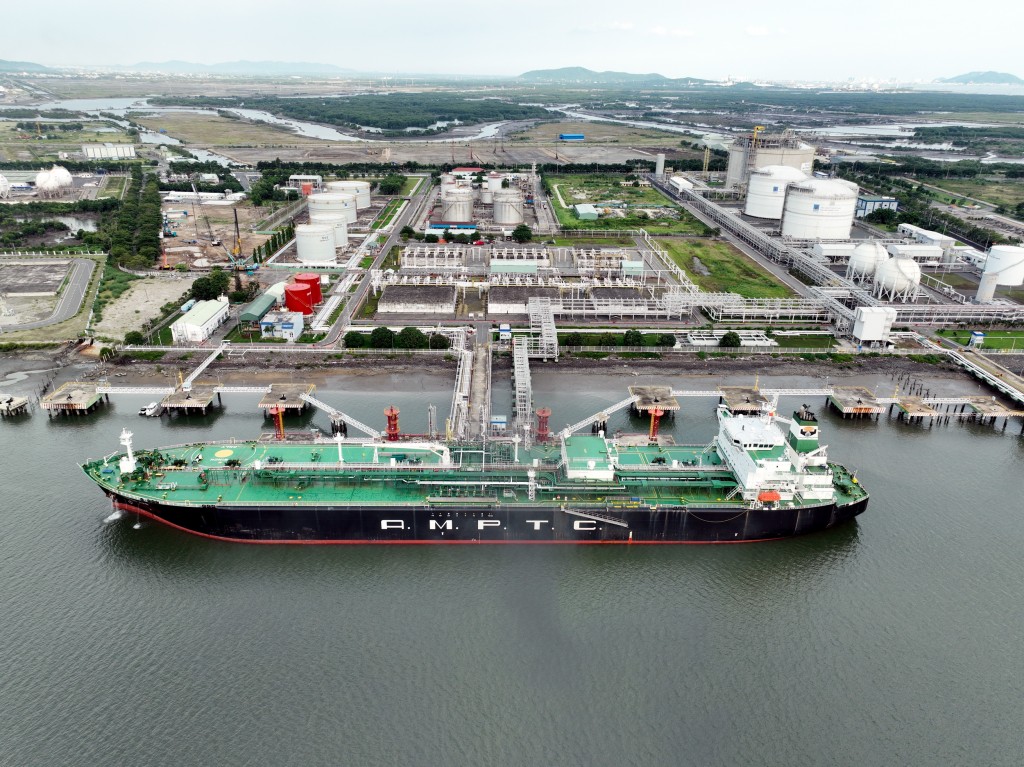Liquefied Natural Gas (LNG) – An Emerging Trend in Vietnam’s Energy Sector
Liquefied Natural Gas (LNG) was first recognized in the late 19th century. Today, it is increasingly used across many countries around the world. In line with this global energy transition, Vietnam has also started to participate in the LNG market.
Liquefied Natural Gas (LNG):
LNG was discovered in the 19th century when British chemist and physicist Michael Faraday conducted experiments with various gases, including natural gas.
LNG is primarily composed of methane (CH₄ – approximately 94.3%), is colorless, odorless, and non-toxic. It is cooled to –162°C to convert into a liquid state. In this form, LNG occupies only 1/600th the volume of natural gas under standard conditions (15°C, 1 atm), making it easier to store and transport over long distances. Its storage capacity is 2.4 times greater than that of compressed natural gas (CNG).
When combusted, LNG can produce a flame with a very high temperature (around 1,880°C) and burns completely without leaving residue. This makes machinery and equipment safer, reduces wear and tear, minimizes maintenance, and extends operational lifespan. LNG combustion emits 40% less CO₂ than coal and 30% less than oil, making it the cleanest fuel among conventional energy sources.
In 1873, German engineer Karl Von Linde built the first centrifugal gas compressor in Munich. The first LNG plant was built in West Virginia, USA in 1912 and began operating in 1917.
In 1940, the first experimental LNG station was established in Cornwell, USA. Later, an industrial facility was constructed in Ohio to meet peak natural gas demand. The facility had a liquefaction capacity of 200 m³/day and a regasification capacity of 115 m³/hour to re-inject gas into the pipeline network.
France was one of the first countries to import LNG. In the late 1950s, Gaz de France – a French multinational energy company – began establishing maritime supply routes. By 1963, three liquefaction units had been commissioned near Oran to deliver gas to the UK and France (Fos-sur-Mer terminal).
In recent years, advances in liquefaction and shipbuilding technologies have significantly propelled the development of the LNG sector. Long-distance gas transportation has become both economically and technically viable.
The United States is a prime example of LNG usage for power generation. According to the U.S. Energy Information Administration (EIA), in 2022, gas-fired power plants accounted for 40% of the country’s electricity production, coal for 20%, with the rest coming from renewables (21.5%) and nuclear energy (18%).
Several other countries are also accelerating their transition to natural gas: China with gas making up 10% of its energy mix, Japan 21.3%, and South Korea 18%.
With robust growth in global LNG demand, Wood Mackenzie forecasts that an additional 100 million tons of LNG capacity will be needed by the mid-2030s, a 25% increase over current supply, supplementing projects already under construction. Most of this demand is expected to come from Asia — with Vietnam being a standout name.
LNG Applications in Vietnam:
Thanks to its high energy density and low harmful emissions, LNG has become an environmentally friendly and cost-effective solution. Globally, LNG is widely used across various industries such as power generation, steel manufacturing, and metallurgy. It can also be used in transportation, as well as in supplying energy for hotels, restaurants, and tourist resorts.
 |
| Vietnam has taken its first step toward integrating with the global energy trend as the first LNG vessel arrived at Thi Vai terminal. Here is the English translation of the full passage: |
Liquefied Natural Gas (LNG) – The Trend of Vietnam’s Energy Sector
As of now, the Vietnam Gas Corporation (PV GAS) is the first and only enterprise in Vietnam to be granted a Certificate of Eligibility for LNG import and export trading by the Ministry of Industry and Trade.
Notably, after more than four years, PV GAS has completed Vietnam’s first, largest, and most modern LNG terminal. The Thị Vải LNG Terminal (1 MMTPA) located at the Cái Mép petroleum port can receive LNG carriers with a tonnage of up to 100,000 tons. The terminal includes a storage tank with a capacity of 180,000 m³, two regasification units with a maximum capacity of 171 tons/hour, a truck loading station, a pressure reduction station, a gas pipeline connection system, a centralized control and operations center, and a fire protection system.
The Thị Vải LNG Terminal meets all domestic and international standards and technical regulations, as well as strict operational safety requirements. These have been verified through an in-depth evaluation process and highly rated for their detailed, feasible, and tightly integrated operational planning. As a result, the reception of Vietnam’s first LNG shipment and the commissioning process were completed ahead of schedule without any technical risks or errors, ensuring safety, environmental protection, and quality standards.
Currently, PV GAS is efficiently and continuously supplying LNG to low-pressure gas consumers. The Thị Vải LNG Terminal is expected to provide additional gas supply to customers in the Southeast region and partially compensate for the domestic gas shortage starting from 2024.
In addition to investing in the Thị Vải LNG Terminal (1 MMTPA), PV GAS is also developing the Sơn Mỹ LNG Import Terminal, which is projected to have a total capacity of up to 10 million tons of LNG per year upon completion. PV GAS’s LNG infrastructure will essentially meet the future energy demand of southern Vietnam.
PV GAS is steadily implementing a strategic chain of LNG projects including the Thị Vải LNG Terminal (1 MMTPA), the Sơn Mỹ LNG Terminal project, and a similar terminal project in Northern Vietnam. With methodical and meticulous investment, this LNG terminal project chain is expected to demonstrate PV GAS’s capability to meet market demands and serve as a lever for Vietnam to establish a footprint in both regional and global LNG markets.
In the near future, LNG is expected to be applied across various sectors in Vietnam, thereby fulfilling the nation’s commitment to achieving net zero greenhouse gas emissions.
Editorial Board – Vietnam Energy Magazine




